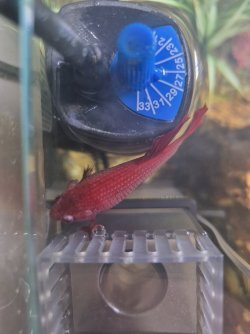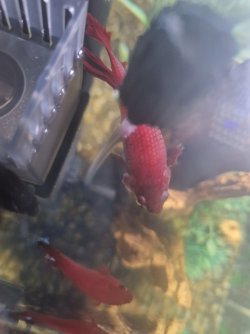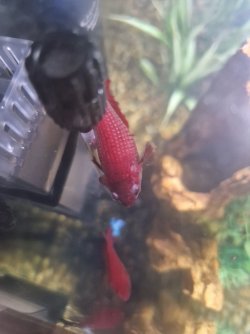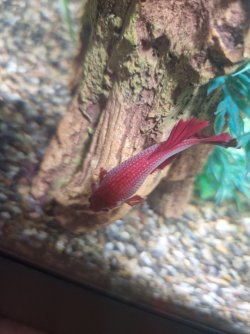Picture of the fish from the side?
Video of the fish too. You can upload videos to YouTube, then copy & paste the link here.
If you use a mobile phone to film the fish, hold the phone horizontally (landscape mode) so the footage fills the entire screen and doesn't leave black bars on either side.
How long have you had the fish for?
How long has the tank been set up for?
What is the ammonia, nitrite, nitrate and pH of the water?
What sort of filter is on the tank?
How often and how do you clean the filter?
How often do you do water changes and how much do you change?
Do you gravel clean the substrate when you do a water change?
Do you dechlorinate the new water before adding it to the tank?
Do you have buckets and hoses specifically for the fish tank?
--------------------
BASIC FIRST AID FOR FISH
Test the water for ammonia, nitrite, nitrate and pH.
Wipe the inside of the glass down with a clean fish sponge. This removes the biofilm on the glass and the biofilm will contain lots of harmful bacteria, fungus, protozoans and various other microscopic life forms.
Do a 75% water change and gravel clean the substrate every day for a week or until the problem is identified. The water changes and gravel cleaning will reduce the number of disease organisms in the water and provide a cleaner environment for the fish to recover in. It also removes a lot of the gunk and this means any medication can work on treating the fish instead of being wasted killing the pathogens in the gunk.
Make sure any new water is free of chlorine/ chloramine before it is added to the tank.
Clean the filter if it hasn't been done in the last 2 weeks. However, if the filter is less than 6 weeks old, do not clean it. Wash the filter materials/ media in a bucket of tank water and re-use the media. Tip the bucket of dirty water on the garden/ lawn. Cleaning the filter means less gunk and cleaner water with fewer pathogens so any medication (if needed) will work more effectively on the fish.
Increase surface turbulence/ aeration to maximise the dissolved oxygen in the water.





